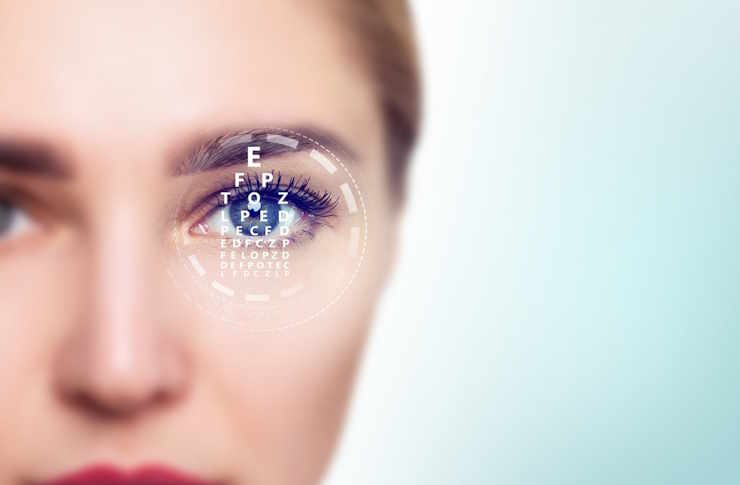Optimizing screen settings and lighting to reduce glare-related blur
Many people notice intermittent blurring when working on screens, especially in bright or poorly lit environments. Adjusting display settings and the surrounding lighting can reduce glare, support visual acuity, and make diagnostics of underlying eye conditions clearer. This article explains practical steps and considerations for safer, more comfortable screen use while addressing common optics and ergonomics factors.

This article explains how thoughtful screen and lighting adjustments can reduce glare-related blur and improve visual comfort without replacing clinical evaluation. Small changes to contrast, color temperature, display angle, and the room’s illumination often help the eyes process images more clearly, which can be especially important for people monitoring vision-related conditions or undergoing refraction or retinal imaging. This guidance focuses on practical, evidence-informed adjustments that complement—rather than substitute for—professional diagnostics.
This article is for informational purposes only and should not be considered medical advice. Please consult a qualified healthcare professional for personalized guidance and treatment.
Vision and screen ergonomics
Positioning and ergonomics affect how light interacts with your eyes and the display. Place your screen so the top of the monitor is at or slightly below eye level and sit about an arm’s length away; this reduces the angle at which overhead lights and windows reflect off the glass. Tilt and swivel the display to minimize direct reflections, and use an adjustable chair and desk to maintain neutral head and neck posture. Proper ergonomics can reduce glare-induced squinting and head movements that worsen perceived blur and fatigue.
How lighting affects the retina and acuity
Lighting influences how the retina adapts and how quickly the visual system can resolve details (acuity). High contrast between a bright window and a dim screen forces the pupil to change size frequently, degrading image stability on the retina. Aim for balanced, diffuse ambient light rather than bright point sources directly behind or above the screen. Use curtains or diffusers on windows and consider indirect lighting to avoid hotspots on glossy displays; this helps the retina receive a steadier luminance and supports clearer vision.
Refraction, diagnostics and imaging considerations
If glare-related blur persists despite adjustments, it may reflect refractive error, cataract progression, or issues visible on retinal imaging. Accurate refraction and diagnostics require stable viewing conditions: neutral room lighting and minimal reflections improve the reliability of visual acuity tests and imaging of the retina. When preparing for tests such as refraction or fundus imaging, technicians should control ambient light and screen brightness so that measurements reflect the eye’s optics rather than environmental glare.
Optics, glaucoma, and cataract glare issues
Glare sensitivity can be a symptom of early cataract or other optical changes of the eye. Cataracts alter how light scatters on the lens, increasing veiling glare and reducing contrast sensitivity. In glaucoma, advanced changes may reduce contrast perception, making bright reflections more bothersome. While adjusting screens and lighting helps symptom management, these optics-related causes warrant clinical evaluation. Eye-care providers can diagnose and recommend appropriate interventions based on imaging and functional tests.
Telemedicine and rehabilitation for screen-related blur
Telemedicine can support initial screening and follow-up for patients who experience glare-related blur. During virtual visits, clinicians can guide patients through simple checks of screen settings, lighting placement, and near-task ergonomics. For longer-term issues, vision rehabilitation specialists can offer strategies such as contrast enhancement, magnification aids, and training to optimize visual function for screen tasks. Remote diagnostics may also utilize imaging uploads or live visual acuity tests when appropriate.
Practical ergonomics and workplace adjustments
Start with display settings: reduce maximum brightness to match ambient light, increase text size or scaling to avoid strain, and adjust contrast and color temperature for comfort—warmer tones can be easier on the eyes in low light. Enable features like dark mode when suitable, but ensure sufficient contrast for clear reading. Use matte screen protectors or anti-glare filters for glossy displays. For workstations, place task lighting behind or to the side of the screen and avoid direct overhead LEDs that cause specular reflections. Regular breaks following the 20-20-20 guideline—every 20 minutes, look at something 20 feet away for 20 seconds—help the visual system recalibrate and reduce sustained blur.
Conclusion
Reducing glare-related blur combines sensible ergonomics, controlled lighting, and thoughtful display configuration. These adjustments can lessen visual discomfort and support clearer imaging and diagnostics, but persistent or worsening blur should prompt a clinical assessment for refractive changes, cataract, glaucoma, or retinal concerns. Combining environmental fixes with professional evaluation provides the most reliable path to sustained visual clarity and functional comfort.




